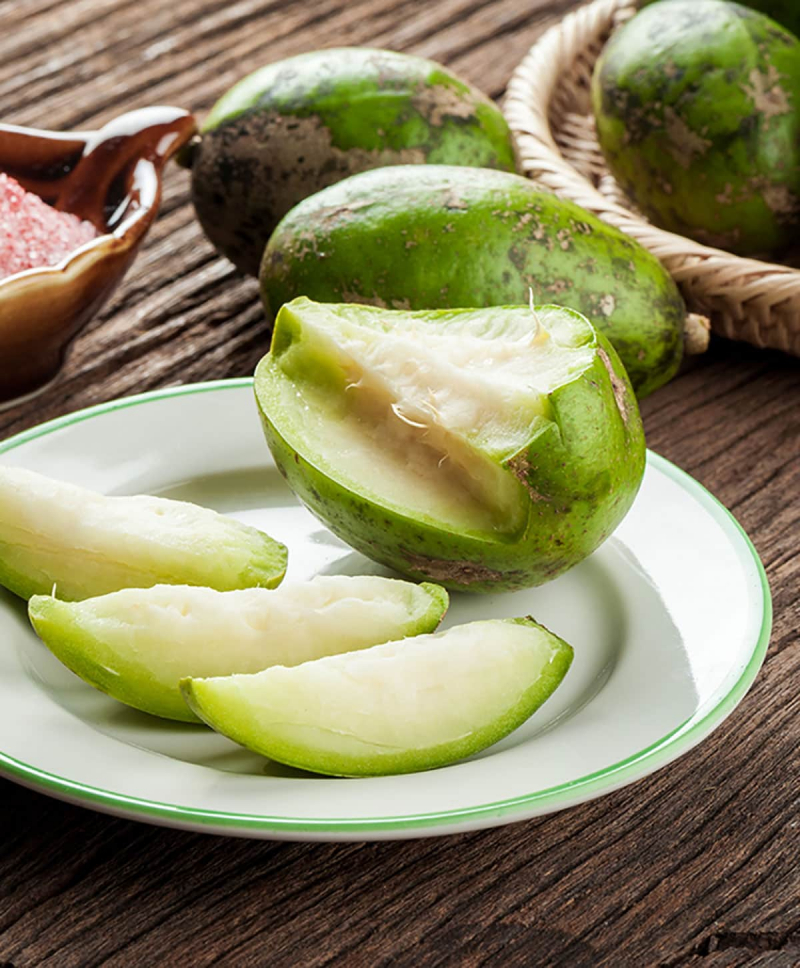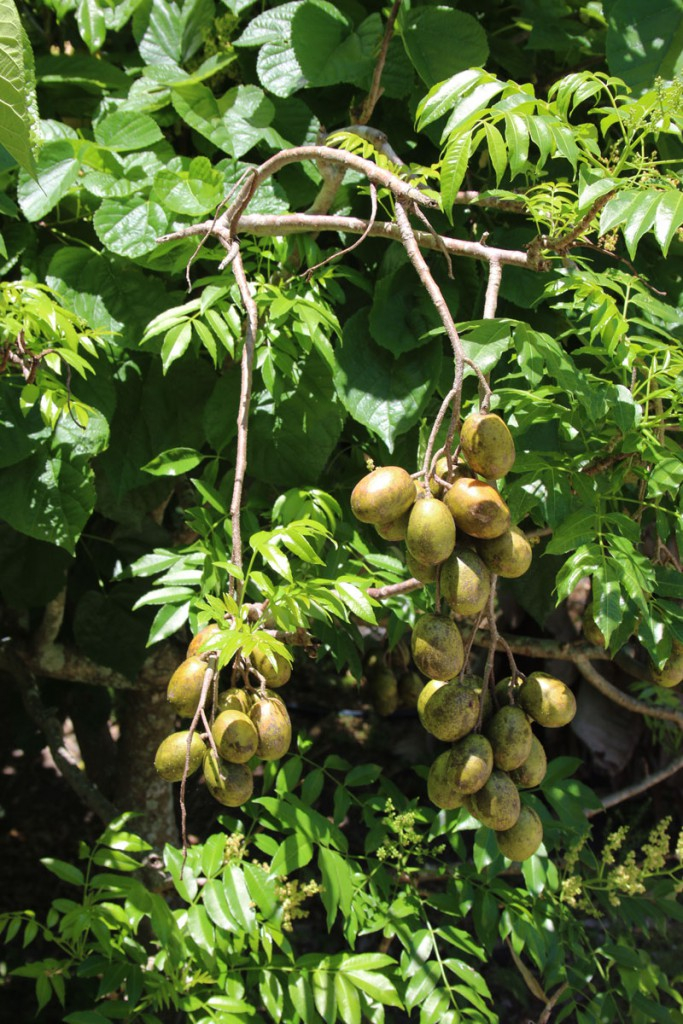June Plum
June plums, botanically classified as Spondias dulcis, are sweet and sour fruits belonging to the Anacardiaceae family. The oval fruits develop in large clusters on fast-growing trees in tropical forests and are known by many regional names, including Ambarella, Jew Plum, Kedondong, Buah Long Long, Golden Apple, and Yellow Egg. June plums are native to Southeast Asia and Polynesia, and over time, the trees have become naturalized in tropical regions worldwide. The fruits can be consumed at any stage of maturity and are favored for their firm flesh and tangy, sweet-tart flavor. June plums are not commercially cultivated and are grown on a small scale for sale in local fresh markets.
On a single tree, the fruits can be observed at different stages of development, looking solid green, solid yellow, or variegated shades of green and yellow. The fruits mature from green to yellow. Depending on the level of ripeness, the flesh beneath the skin is firm and ranges in color from pale yellow to white. A fibrous pit with a few flat seeds is also present in the flesh's middle. As the fruit ripens, the woody, coarse texture of the pit seeps into the flesh, giving it a rough texture. June plums have a sweet, pineapple-like flavor and are crisp, solid, and dense when fresh. The combination of sweet and tart flavors is suitable for making fabulous Jamaican drinks, preserves, and desserts. Moreover, you will be addicted to the taste of plum when consuming it with salt or mixing it in stews.












